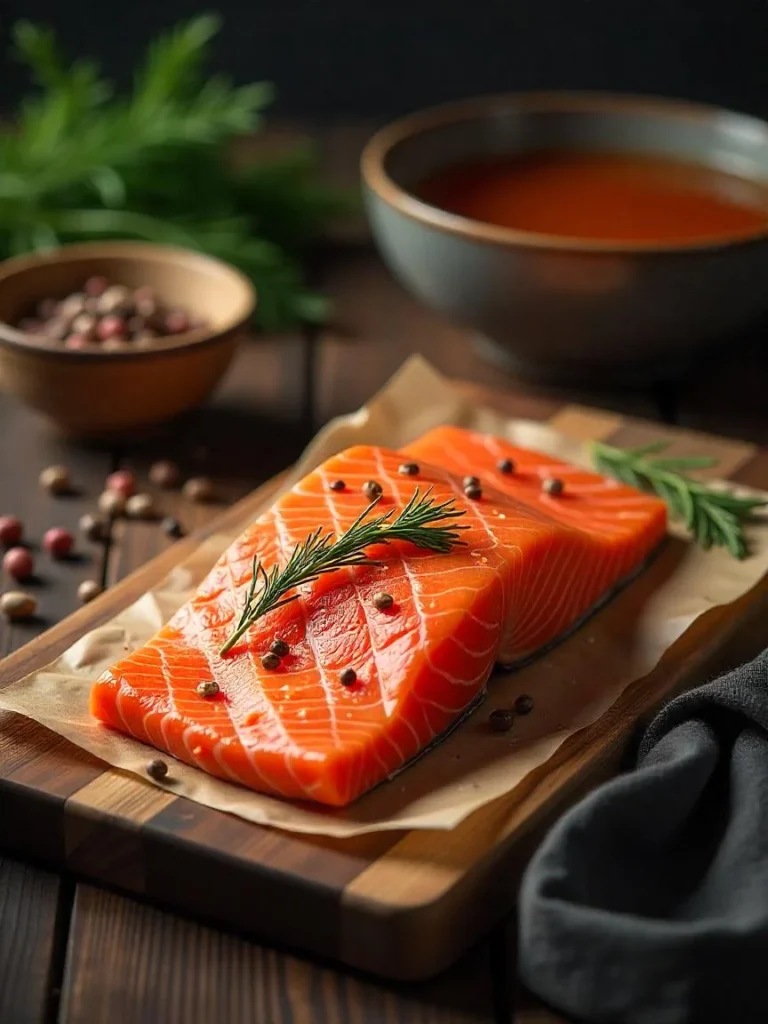How to make [brine recipe for salmon smoking]
Introduction to the recipe brine recipe for salmon smoking
A well-crafted brine recipe for salmon smoking is the foundation of every juicy, tender, and mouthwatering piece of smoked salmon. But what makes a brine truly perfect? And how can you create one that elevates your smoked salmon game without hours of trial and error?
In this blog post, we’ll walk you through five easy steps to craft the ultimate [brine recipe for salmon smoking]. Whether you’re a seasoned smoker or a beginner looking to impress at your next barbecue, these tips will help you achieve restaurant-quality results right in your backyard.
Table of Contents

Step 1: Gather the ingredients for the brine recipe for salmon smoking – keep it simple but flavorful
The first step to perfecting your [brine recipe for salmon smoking] is gathering high-quality ingredients. A good brine doesn’t need to be complicated—it just needs to balance salt, sugar, and flavor enhancers like spices and seasonings. Here’s a basic list to get started:
- Salt : Use kosher salt because it dissolves easily and avoids making the fish overly salty 8.
- Sugar : Brown sugar works wonders as it adds sweetness and caramelizes beautifully during smoking. White sugar can also work if that’s all you have on hand.
- Water : Always use clean, filtered water to ensure no off-flavors seep into your brine.
- Optional Flavor Boosters : Soy sauce, garlic powder, onion powder, black pepper, hot sauce, or even wine can take your brine to the next level. For example, Kevin from Kevin is Cooking suggests adding soy sauce and tabasco for extra depth 3.
Pro Tip: If you’re feeling adventurous, try experimenting with dry seasoning mixes like crab and shrimp seasoning, which can add layers of complexity to your brine 2.
By keeping your ingredient list simple yet versatile, you set yourself up for success before you even begin mixing.
Step 2: Mix and Dissolve – The Science Behind a Balanced Brine
Once you’ve gathered your ingredients, it’s time to mix them into a balanced solution. Why does balancing matter? Because too much salt can make your salmon inedible, while too little won’t properly preserve or flavor the fish. Similarly, sugar helps counteract the saltiness and creates a beautiful glaze when exposed to heat.
Here’s how to nail the proportions:
- Start with a ratio of 1 tablespoon of salt per 1 cup of water 8. This is a safe baseline for beginners.
- Add equal parts brown sugar and salt (e.g., ½ cup each) for a classic sweet-and-salty profile 1.
- Stir everything together until fully dissolved. If using additional ingredients like soy sauce or spices, whisk them in thoroughly.
For those who prefer a more concentrated brine, consider heating the mixture gently on the stove. Boiling ensures all solids dissolve completely, creating a smooth liquid ready to infuse your salmon with flavor 5.
Remember, patience pays off here—letting the brine cool completely before adding your salmon prevents cooking the flesh prematurely.
Step 3: Soak Your Salmon – Timing Is Key
Now comes the fun part: letting your salmon soak in the brine! This step allows the flavors to penetrate deep into the fish, ensuring every bite bursts with deliciousness. However, timing is crucial—you don’t want to under-brine or over-brine your salmon.
Here are some guidelines:
- For fillets or steaks, aim for 4–6 hours of soaking in the refrigerator 7.
- Whole sides of salmon might require closer to 8–12 hours , depending on their thickness.
- Never brine salmon for longer than 24 hours, as excessive exposure to salt can ruin its texture and taste 4.
Place your salmon in a non-reactive container (like glass or plastic) and pour the brine over it, ensuring the fish is fully submerged. Cover tightly with plastic wrap or a lid and store it in the fridge.
Pro Tip: If your salmon floats instead of staying submerged, weigh it down with a plate or bowl to keep it underwater. This ensures even brining throughout the entire piece.
Step 4: Pat Dry and Rest – The Secret to Crispy Skin
After brining, resist the urge to toss your salmon straight into the smoker. Instead, pat it dry with paper towels and let it rest uncovered in the fridge for about 1–2 hours. This step might seem unnecessary, but trust us—it’s worth it!
Why bother drying your salmon? As Hank Shaw explains, allowing the surface to dry forms a tacky layer called the pellicle, which helps smoke adhere better and promotes crispy skin 4. Skipping this step could result in soggy, less flavorful salmon.
While your salmon rests, prepare your smoker by setting it to a low temperature between 150°F and 160°F. This gentle heat ensures your fish cooks evenly without burning 7.
Step 5: Smoke Like a Pro – Finish Strong
Finally, it’s time to smoke your salmon! Place the dried salmon skin-side down on the smoker rack and let it absorb the aromatic smoke. Depending on the size of your fillets, this process usually takes 2–4 hours . Check for doneness by looking for an internal temperature of around 145°F.
To enhance the smoky flavor, choose wood chips or pellets like mesquite, hickory, or alder. Mesquite offers bold notes, while alder provides a milder, sweeter aroma 6. Try out different types of wood to discover the flavor combination you love most.
After smoking, take the salmon out of the smoker and let it rest for 10 minutes. This resting time helps the juices settle back into the meat, ensuring it stays moist and tender when sliced.
Conclusion: Ready to Elevate Your brine recipe for Salmon smoking Game?
Congratulations—you now know how to perfect your [brine recipe for salmon smoking] in just five easy steps! From selecting the right ingredients to mastering the art of brining and smoking, you’re equipped to create show-stopping dishes that will wow family and friends alike.
So, are you ready to put your newfound knowledge to the test? Grab your ingredients, fire up your smoker, and start crafting unforgettable meals today. Happy smoking!🍽
Other similar recipes : brine recipe for salmon smoking

